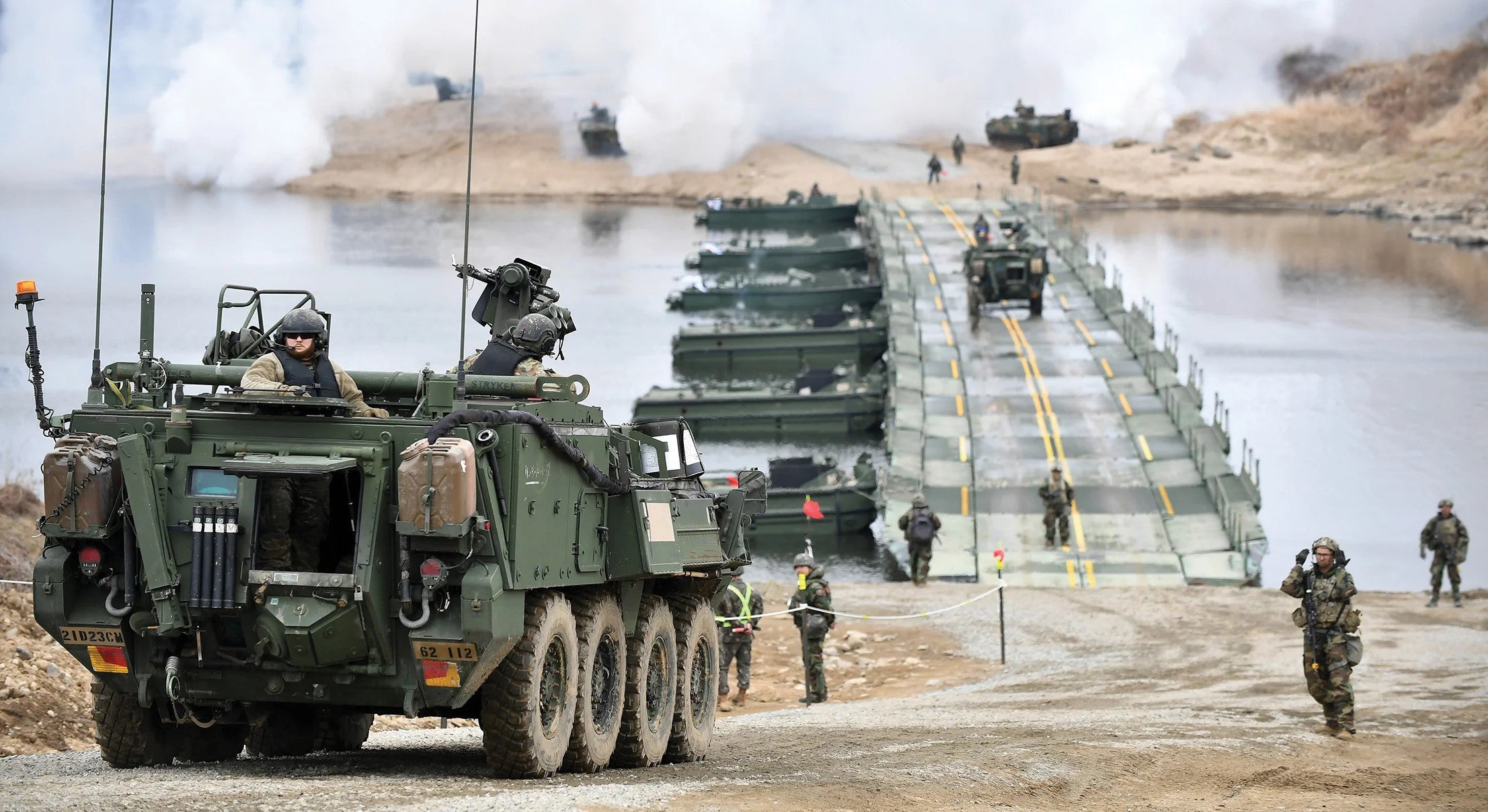Paper Urges Army to Prioritize River Crossing Operations
Paper Urges Army to Prioritize River Crossing Operations

Faced with technological advancements and a lack of practice, the Army should invest in its wet-gap crossing capabilities to prepare for future conflict, according to the author of a new paper published by the Association of the U.S. Army.
“After two decades of counter-insurgency operations in Iraq and Afghanistan, the United States faces emerging threats in Russia and China,” Maj. Aditya “Adi” Iyer writes. “The Army must be prepared for large-scale combat operations against these near-peer threats. [In particular,] the U.S. military must be prepared to conduct wet-gap crossing operations against a well-organized and technologically advanced force.”
In “Bridging Through Time: From River Crossing in World War II to Wet-Gap Crossing Today and in the Future,” Iyer, a student at the School of Advanced Military Studies and a recently graduated Art of War Scholar from the Command and General Staff College at Fort Leavenworth, Kansas, recommends investing in the Army’s wet-gap crossing operations to prepare for future conflict.
The Army refers to river crossings as “wet-gap crossings” in current doctrine and defines them as “crossing an inland water obstacle, requiring extensive planning and detailed preparations.”
Current doctrine on wet-gap crossing operations “does not provide a comprehensive solution to wet-gap crossing operations,” publications are very “technically focused” and “lack … tactical incorporation,” Iyer writes.
The U.S. military has not conducted contested wet-gap crossing operations against near-peer threats since World War II, Iyer writes.
Wet-gap crossings returned to the forefront not long after Russia invaded Ukraine in 2022, when Russian forces failed several times to cross the Siverskyi Donets River.
During three failed attempts to cross the river, Russian forces underutilized three crossing sites, conducted their operations during daylight and failed to employ combined-arms effects to assist in the crossing. As a result, on May 9, 2022, Ukrainian forces prevented Russian troops from crossing and encircling their forces, Iyer writes.
“The successful Ukrainian defense of this river against one of the greatest global military powers should be concerning to the U.S. Army as it considers the feasibility of accomplishing a wet-gap crossing operation in the current and future operating environment,” Iyer writes.
To prepare for future conflict, the Army must incorporate increased deception, reconnaissance and materiel to keep pace with adversaries. “[Technological] advancements have increased the importance of the use of deception, ground-force reconnaissance, materiel superiority, and the training and education of our leaders,” Iyer writes. “The U.S. Army must continue modernizing and investing in the materiel capacity to challenge such adversaries.”
Read the paper here.

